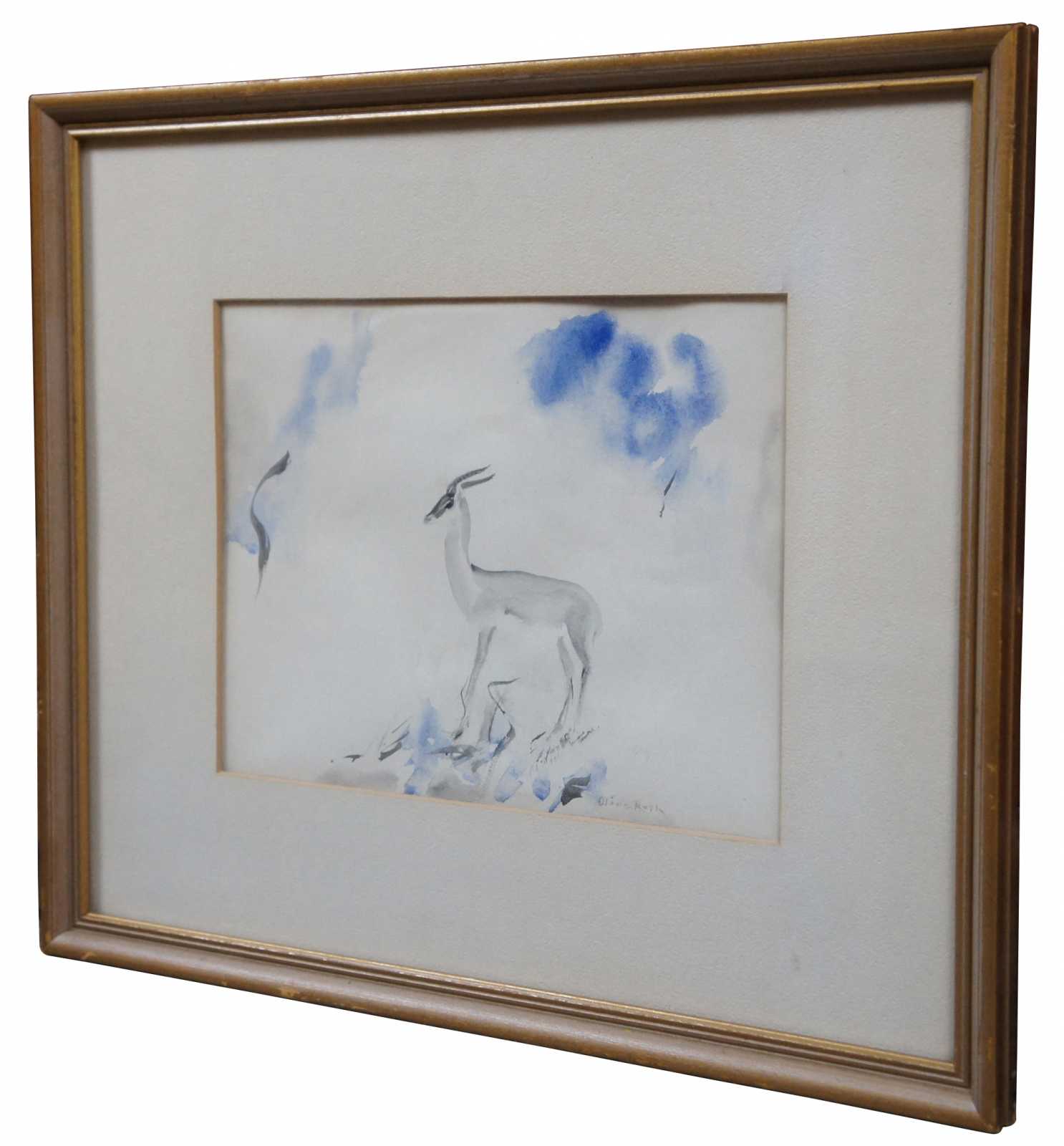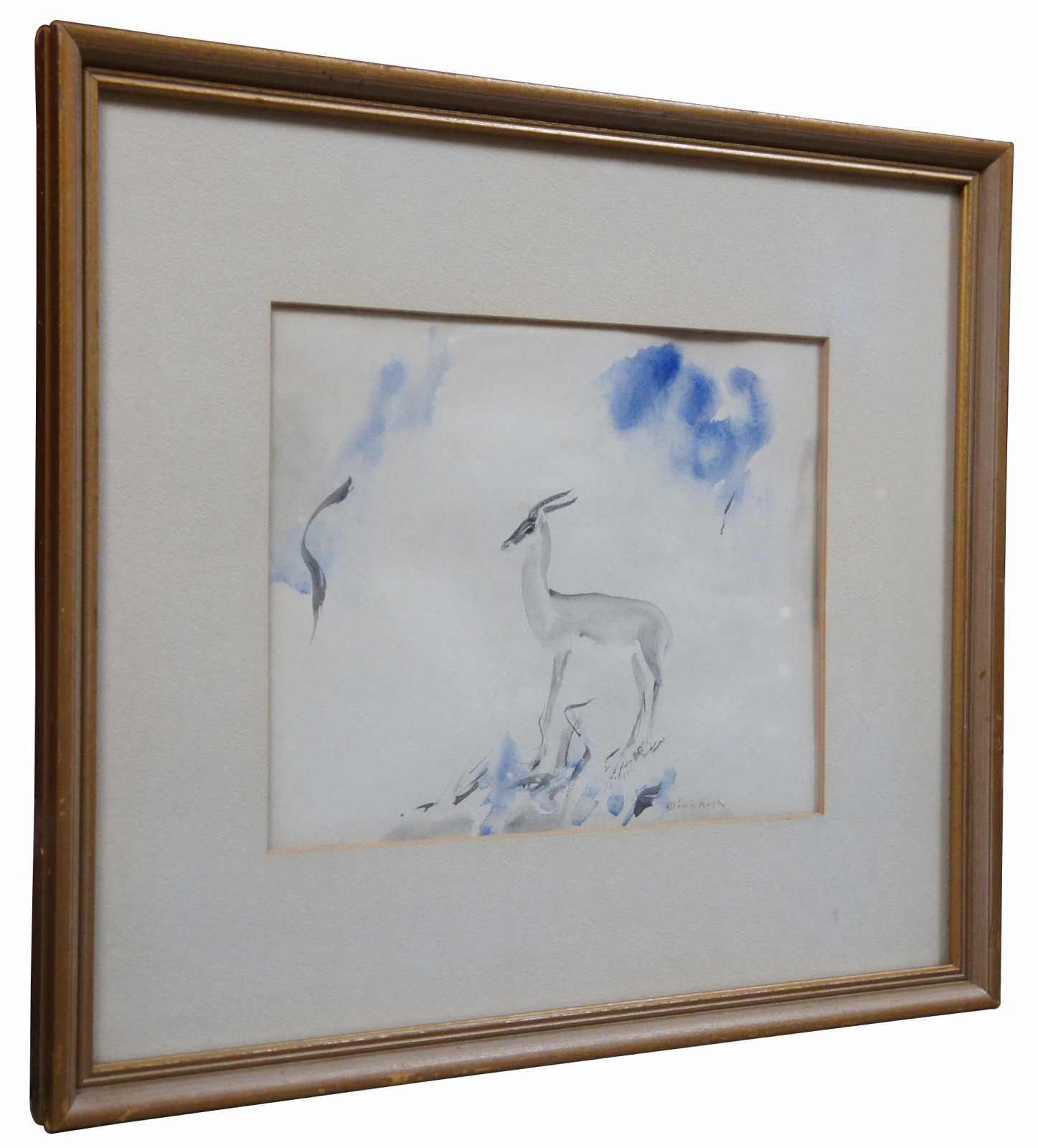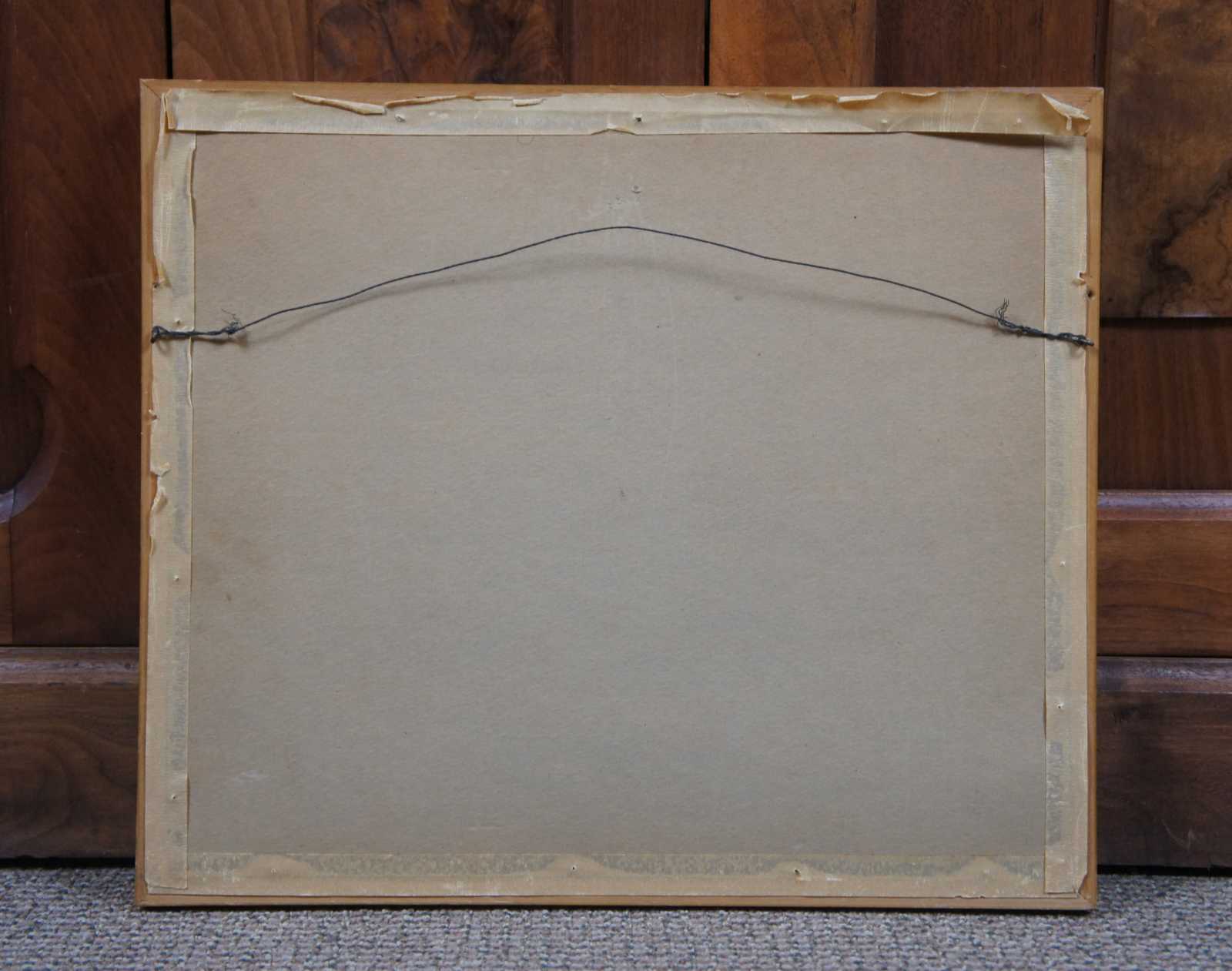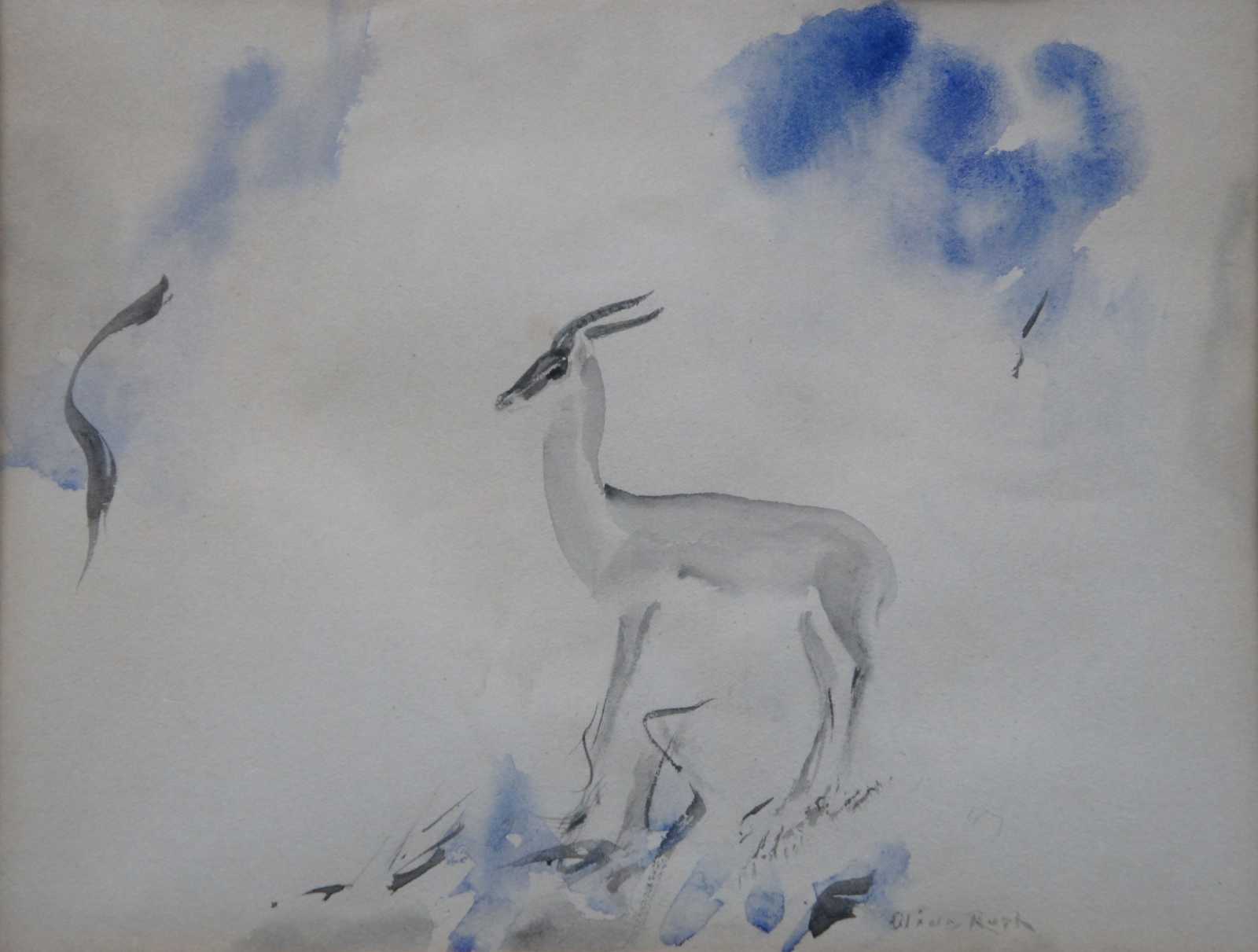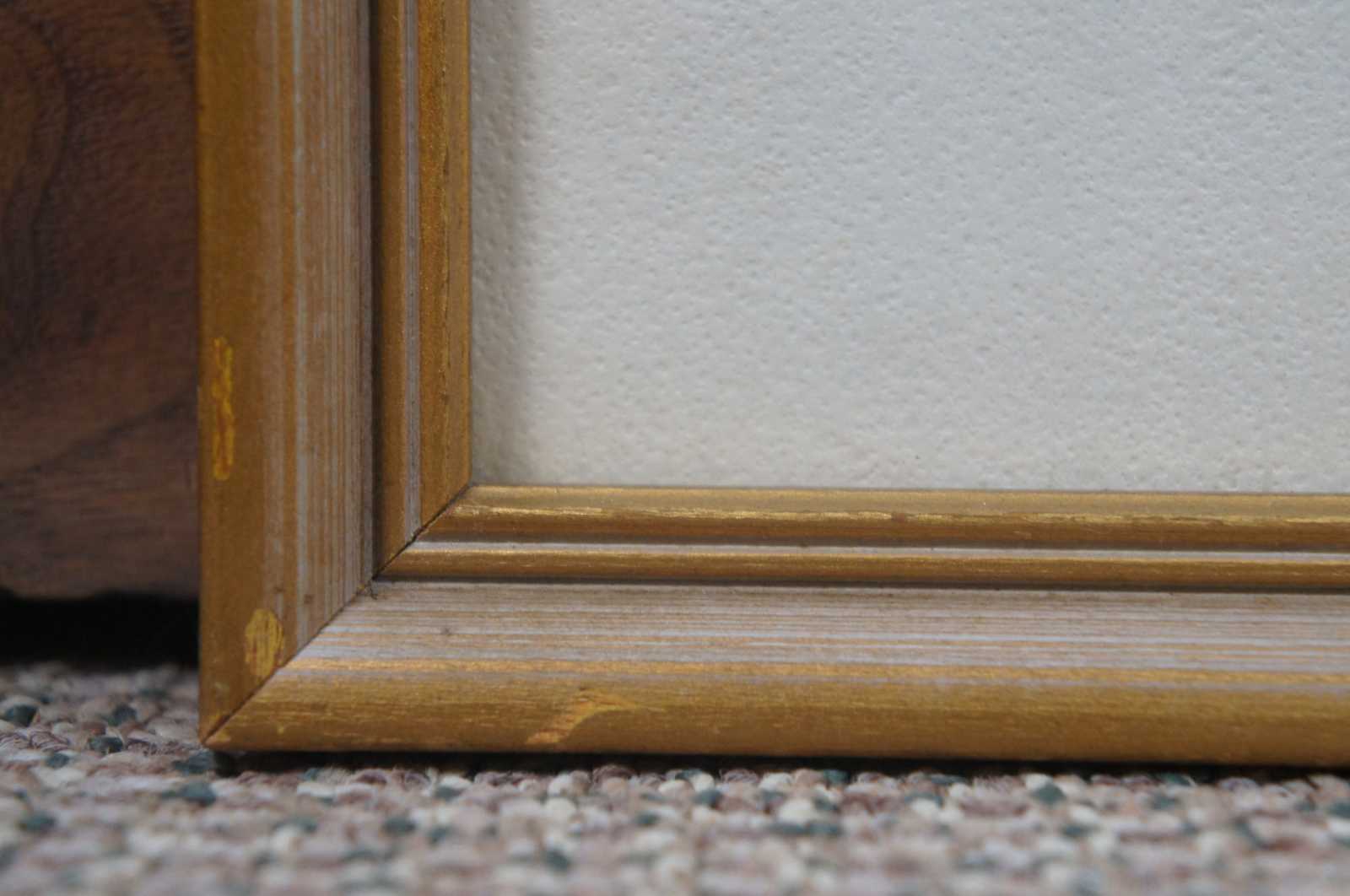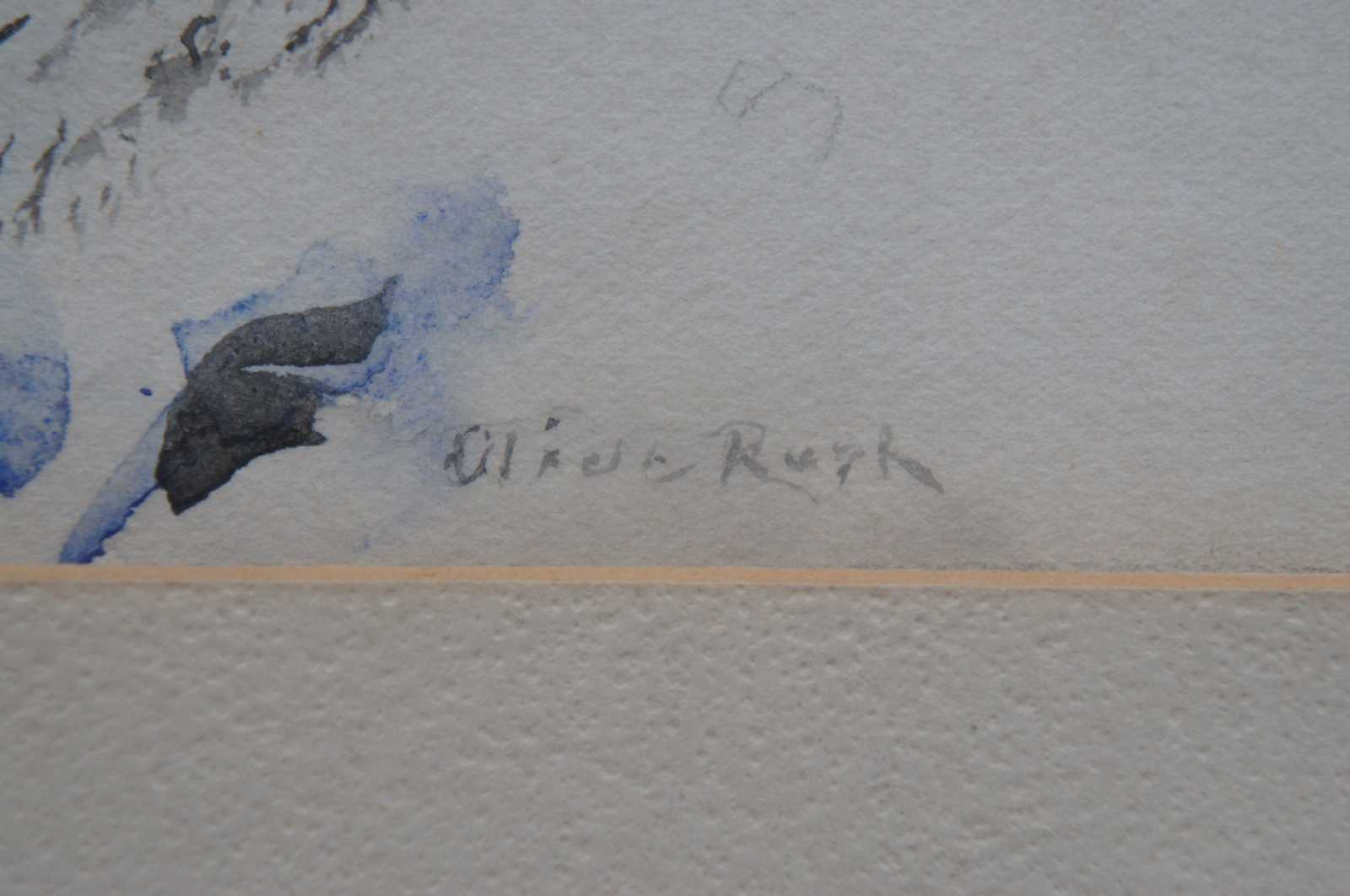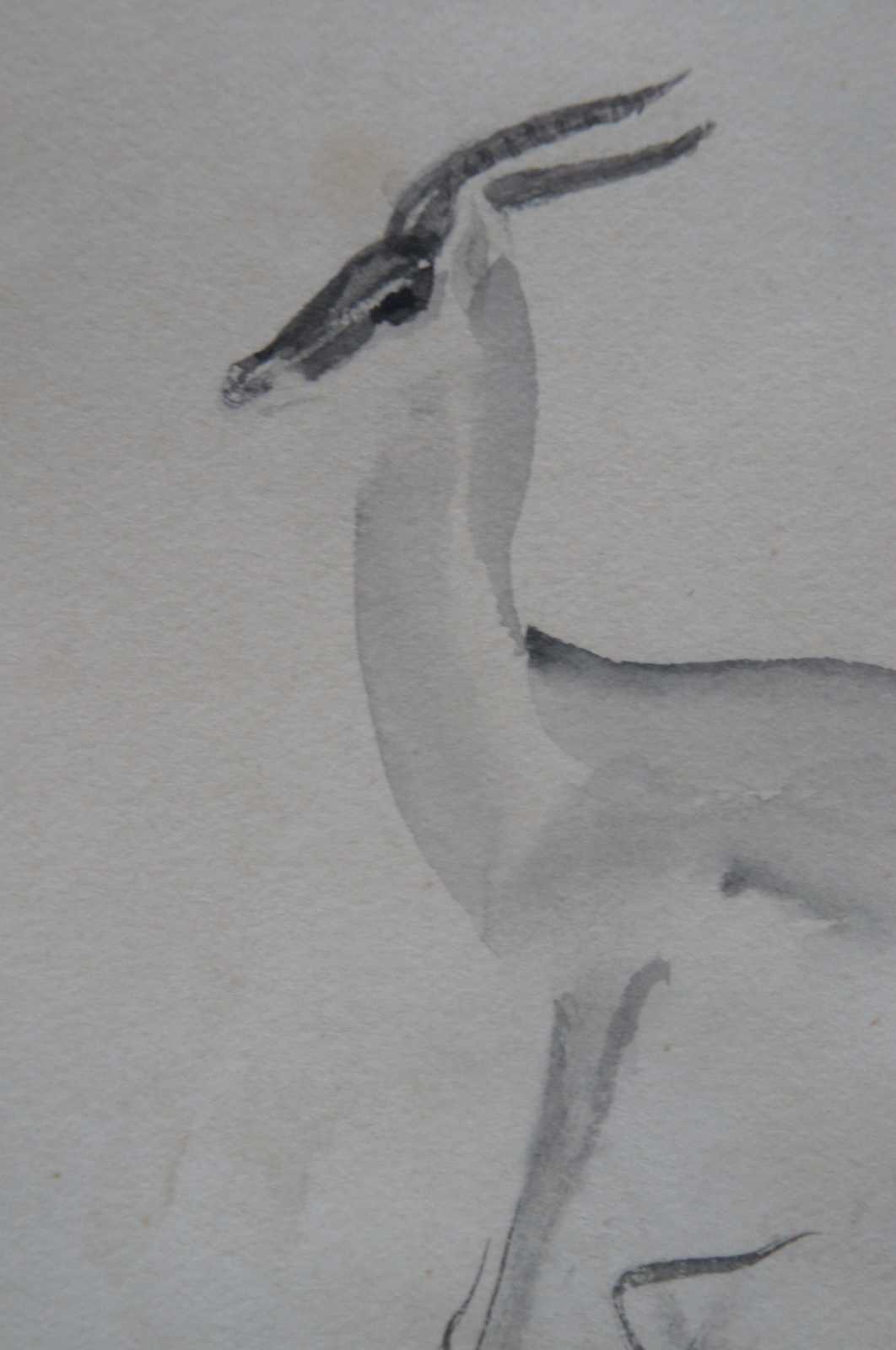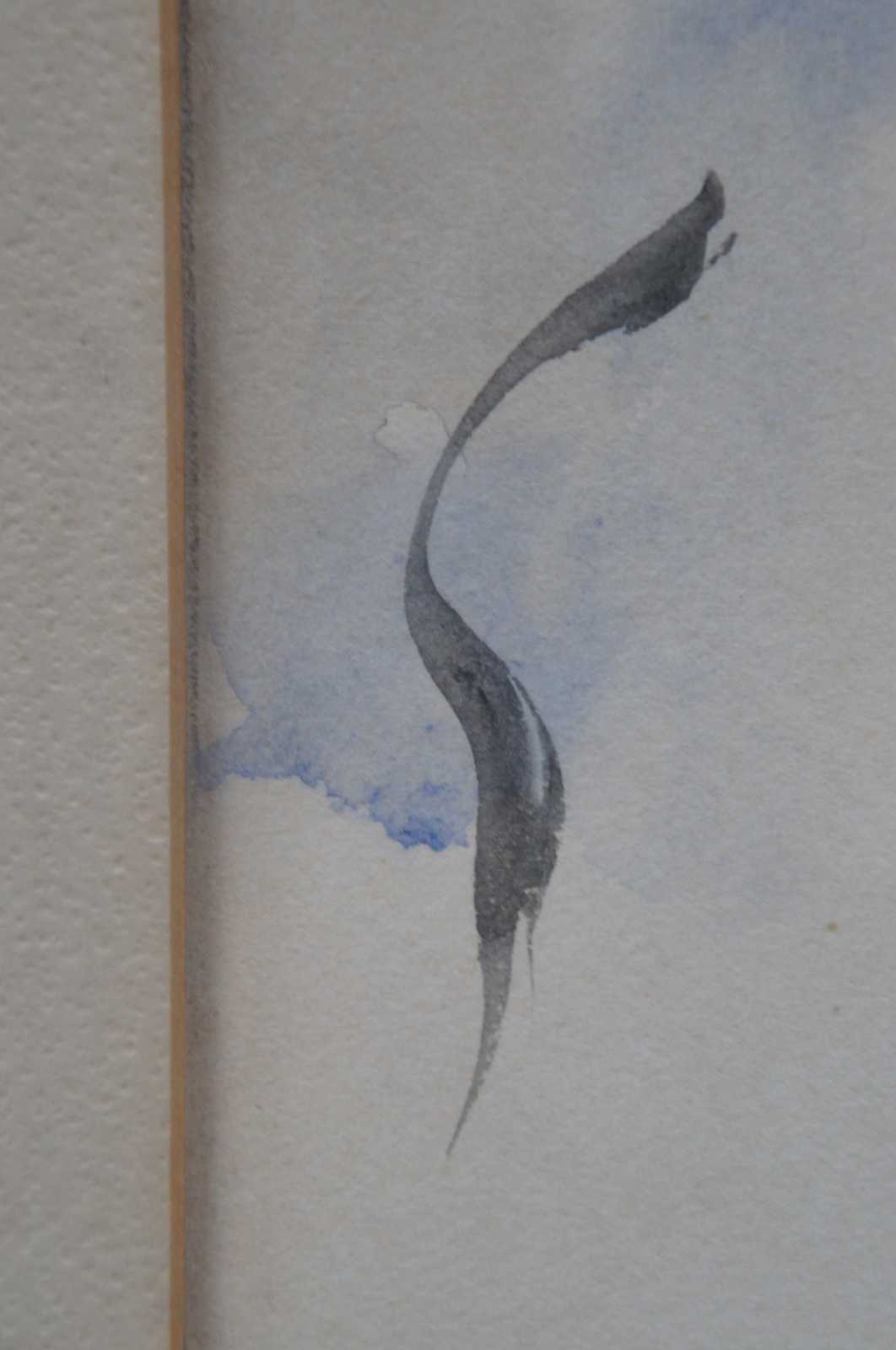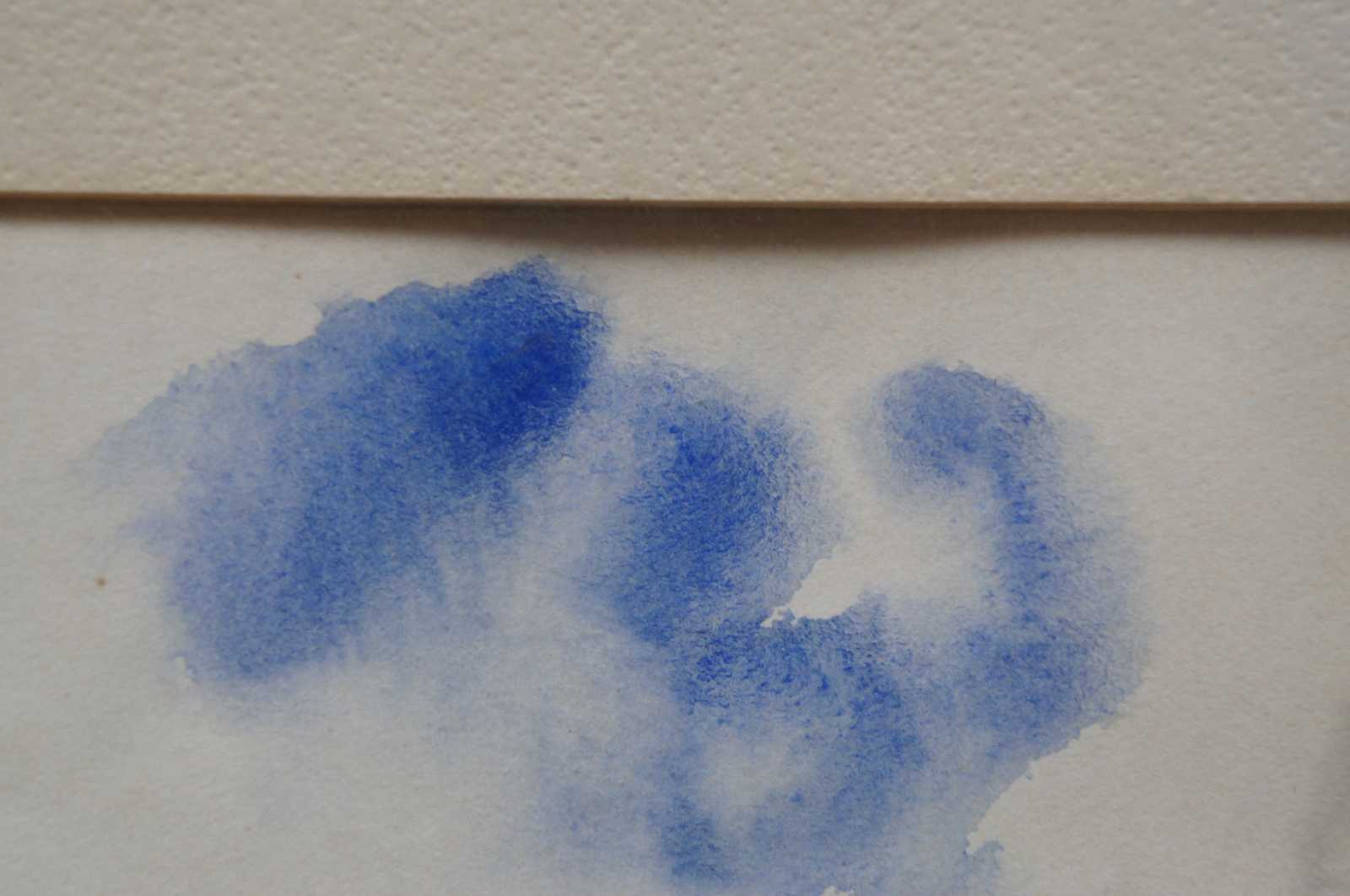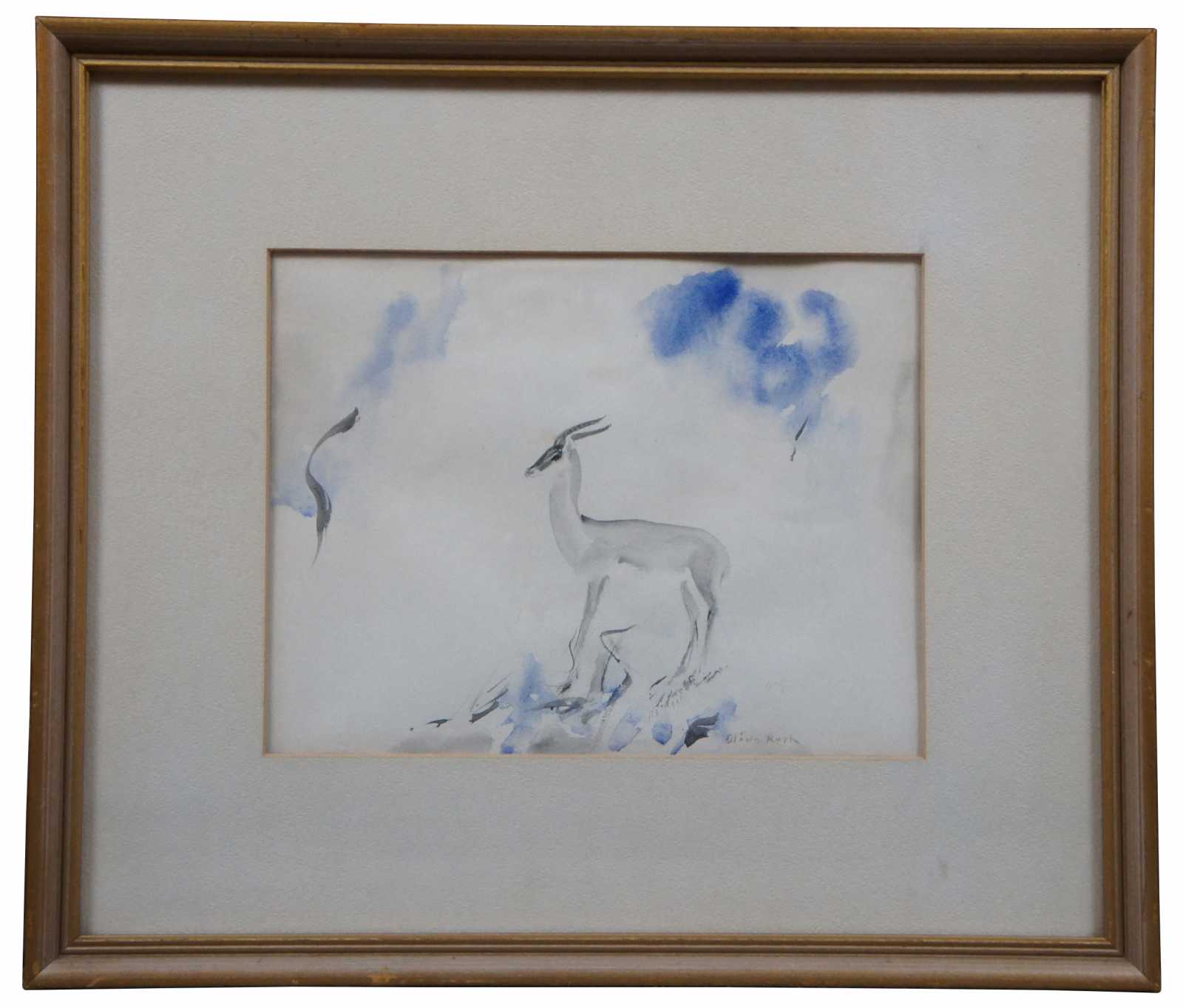
Vintage Olive Rush Gazelle Antelope Watercolor Painting Wildlife Animal 18"
Sold
Shipping:
Free Shipping Included
Delivery:
Estimated 2-15 Business Days
Payments:
Credit Card, Check, Cash, PayPal, Apple Pay, Venmo
Returns:
30 Days 100% Money Back Guarantee, Buyer Pays Return Shipping
Description
Vintage watercolor on paper gazelle painting by Olive Rush. “Known as one of the early 20th-century American women to be fully dedicated as an art professional, Olive Rush said: ""You must learn your own best way of living and creating. You are an individual in art as in life. Another way is not your way."" (32)
She has a number of credits to her professional reputation. She has been described as was one of the most competent muralists of that era, and also had much distinction as an illustrator, including being singled out as a favorite student of illustrator and teacher, Howard Pyle. She established a reputation as an easel painter, especially for portraits and figures; and was an art educator in Indiana and later in New Mexico. There her lasting influence is the encouragement she gave native people to take pride in their own traditions at a time when white culture was moving aggressively westward. She was described by art historian William Gerdts as ""the first important woman artist"" to settle in Santa Fe. (Gerdts 167) In that city, she established much camaraderie with the Native peoples by traveling to their pueblos and reservations on extensive camping and horseback trips, and visiting Spanish villages on barely passable roads. Her focus was to preserve the arts and crafts of these people.
The career of Olive Rush was expansive, not only in subject matter, but geographically and stylistically from traditional to abstract to Oriental motifs. Her artistic output was shaped by the Quaker tenets she learned as a child: faith through good works, reverence for life, simple living and expression of inward grace.
Olive Rush was born in Fairmount, Indiana in 1873, to a Quaker family with six children and raised on a farm at Rush Hill near Fairmount. She graduated from the Fairmount Academy, a Friends Academy established by her parents on their farm. Then she set out on an independent course.
At age 17, she went to Richmond, Indiana, and enrolled for a year at Earlham College as a student of John Elwood Bundy, who became a key inspiration to her focus on art and love of painting. The next year she went to Washington D.C., where she studied at the Corcoran School of Art. She was the youngest person in her class, and after the first year received the prize in 1892 for the student who had shown the most progress. Unlike many of her female contemporaries, she discouraged suitors and was determined to lead an independent life as an artist. Of boys she said: ""I see them once, then they are gone forever."" (Newton 24)
From 1894 to 1898, she was enrolled at the Art Students League in New York and studied with John Twachtman, H. Siddons Mowbray and Augustus Saint-Gaudens. She earned money as a staff artist for the New York Tribune, and in 1898, she received her first commission to illustrate a book. This job allowed her to repay debts to her parents for her education, but she also knew that her heart was more involved with painting than illustration.
In 1899, she moved to Philadelphia and lived for several years with a brother and worked as a commercial artist, while continuing to do easel painting in her spare time. To improve her illustration skills, she studied in Wilmington, Delaware with Howard Pyle at the tuition-free school he operated for specially selected students. She and Pyle got along very well, and she stayed in his classes six years, beginning 1904 when she moved to Wilmington. His students called themselves the Art Colony, and she like the others admired the patience, talent and dignified manner that he showed his students.
In Wilmington she also did some mural painting both with Pyle and independently such as the mural for the chancel of St. Andrew Episcopal Church. In addition, she designed a large stained-glass window for a private home, a project that included angels in four of the five panels. The people who commissioned this window were drawn to her work because they had seen angel figures in many of her illustrations.
Sailing for Europe in 1910, Olive Rush settled in Paris for a year, paying five-dollars per month for rent. In the mornings she studied with Richard E. Miller at the Richard Miller Class for Painters. She later credited his influence for her approach to portraiture and spoke of her time in Paris as stimulating a life-long fascination with Oriental art. In the afternoons three days a week she took French language lessons, something she had done previously when staying with her brother in Philadelphia. She also did much sketching in the city and countryside.
In early 1911, she returned to Indiana to tend her mother who was dying, and then she went back to Wilmington where she and Ethel Pennewill Brown Leach occupied the studio of Howard Pyle while he was abroad. However, the experience proved sad because Pyle, who was in Florence, Italy died unexpectedly, and Rush and Leach had to vacate the studio, which, of course, was part of the artist's estate.
Rush took more art instruction, studying with Frank Benson, William Paxton and Edmund Tarbell at the Boston Museum School in Massachusetts, and then she and another student, Alice Schille, spent the summer of 1913 in Europe. For the next five years, Rush lived and worked as a commercial artist in New York City, but tired of that hectic pace and in 1918 returned to be closer to her family.
She leased a studio for two years in Indianapolis. Described as doing portraits that ""had a delicate, flowerlike handling and a spiritual quality"", she was much sought after to fill commissions, child portraiture. She also painted murals including fairy-tales and nursery-rhymes for the public schools. In addition to her own painting, she began designing bookplates with the encouragement of her brother, who was Director of the Public Library of Indianapolis.
After spending several years in Indianapolis, Olive Rush, age 41, settled in Santa Fe, New Mexico for the remainder of her life. With her father and brother, she had first gone to New Mexico and Arizona in 1914, visiting Indian communities. She later said that the experience ""opened up a whole new world for me"" (28) and led her to focus much more on her own painting. Her move in 1920 meant she was one of the first eastern artists to move to the Southwest.
On Canyon Road, she bought and restored one of the oldest homes in the town, which had a population of about 7,000 people. Her place was on Canyon Road near the home and studio of printmaker Gustave Baumann and his wife. He recalled her as being distinctly identifiable as a Quaker and also spoke of her firm will and her capacity to put people in their place if she thought they were out of line. When she began working with fresco for mural decoration in her home, he tried to discourage her from working with such a messy medium, suggesting it was too masculine for her delicate hands. She made it clear that she was on her own path of creativity and intently mixed fresco colors with sand and plaster until she found a recipe that would last in the New Mexico climate. She was so successful with her own project that numerous people requested her to do murals for their adobe structures including public officials for town buildings.
In 1929, for the dining room of the La Fonda Hotel, owned by the Santa Fe Railroad, she did fresco decoration that had New Mexico figure scenes, native plants and animals. Because of her success with this project, she was hired by the head of the Santa Fe Indian School to oversee mural painting by the students for the school dining room. The project took six weeks and resulted from free-hand drawing by the students on the walls. She said she ""felt like a musical conductor who goes to an orchestra of highly trained musicians."" (31) In fact, Rush became so admiring of her Indian students that she found markets and exhibition venues for some of their work in the East including the 1933 Century of Progress Exposition in Chicago.
Rush also did mural work for the Public Works Art Project (WPA), resulting in a mural for the entryway of the Santa Fe Public Library and in the biology Building of New Mexico State University at Las Cruces. She decorated post offices, and in 1939 spent time in Florence, Colorado to work directly on her mural Antelopes.
In Santa Fe, her close friend was artist Georgia O'Keeffe. They had known each other in New York City where they, under the tutelage of George Bellows, had posed as models for one another. In New Mexico, the women shared a cat named Anselmo, which O'Keeffe owned but Rush cared for in the summers when O'Keeffe returned to the East.
Olive Rush, became seriously ill in 1963, and had so many medical bills that the local Society of Quakers helped her pay her medical bills. Under the leadership of Gustave Baumann's wife, they sold some of her paintings out of her home, which had served as the Quaker meeting house for many years. And when she died three years later, in 1966, she left her home to the Society, a gesture of thanks to her faith which had been the foundation of her talents.
Condition
Good Overall - Some wear to frame; see pictures
Dimensions
17.5” x 0.75” x 15” / Sans Frame - 10.25” x 8” (Width x Depth x Height)
